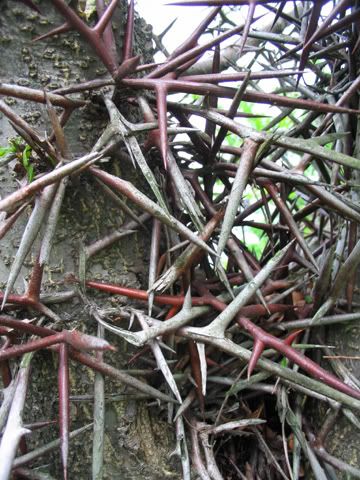365 Urban Species. #271: Honey Locust
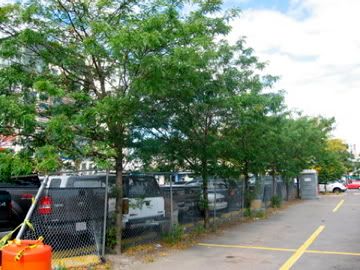
Photo by urbpan. A planted row of honey locusts along a parking lot in the Fenway.
Urban species #271: Honey locust Gleditsia triacanthos
See also black locust
If you closed your eyes in Boston, and touched the first tree you found, the chances are very good that you would touch a honey locust. Fortunately, honey locusts chosen for urban plantings have been cultivated so that they lack the huge sharp thorns that their wild equivalents have, so you could touch it safely. Honey locusts are one of the the top five or six tree species planted in Boston. In Manhattan and Chicago, honey locust is number one.
When, in the Appalachians, land was cleared of trees and scarred with mines, the first wild tree to regrow in the area was honey locust. Its ability to grow quickly in damaged areas suggested that it would be a good choice for the city. Indeed, it's a pioneer plant that tolerates a wide range of disturbed soil qualities, including typical urban soils--compacted by traffic, depleted of nutrients, tainted by pollutants.
Honey locust's foliage is a selling point as well. The leaves are composed of dozens of very small leaflets, which filter sunlight to create a dappled shade. And when the leaves fall in autumn, the leaflets tend to blow away in the wind, rather than accumulate into heavy litter.
But sometimes some litter piles up around the tree anyway. Honey locust is a legume, and its seeds are borne in large shiny brown pods. Often city dwellers will encounter these pods on the sidewalk, not understanding where they came from. Unless there are still some clinging to the small spindly tree's branches, it's hard to associate the fruits with the tree. Each pod has several seeds inside, and when the fruit is mature, the seeds rattle loosely when it's shaken, like a flattened maraca. When the fruit is still green, the seeds are held in a sweet gummy sap, giving the tree its name. There are cultivated varieties of honey locust, engineered for tidy landscapers, that produce no seeds at all.
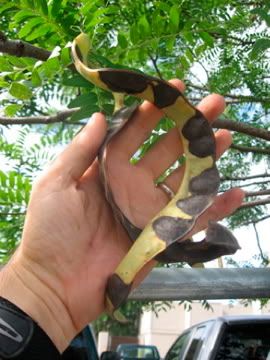
A honey locust pod changing from green to brown as it matures.

A row of honey locusts on Boylston street in Boston showing their autumn colors.
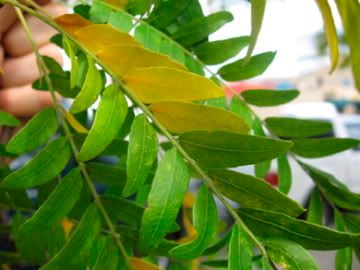
Leaflets still attached.
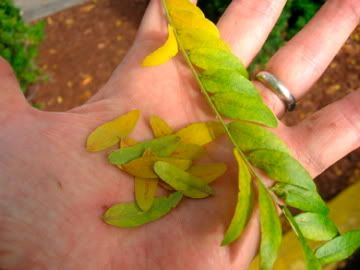
Leaflets falling away.
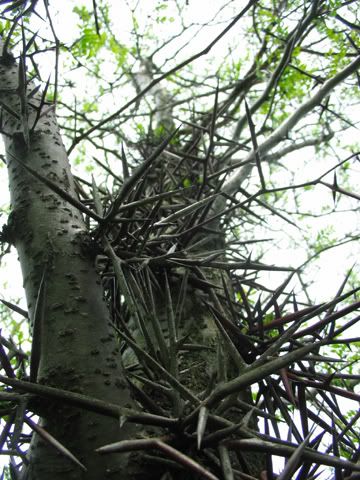
The thorns of a "natural" honey locust, in the Arnold Arboretum. (photos by cottonmanifesto)
